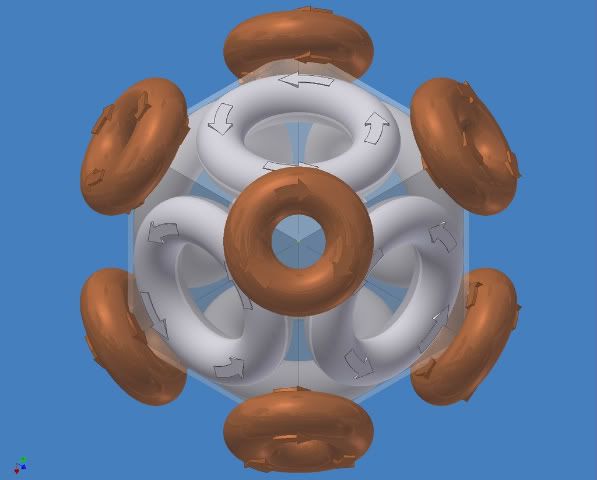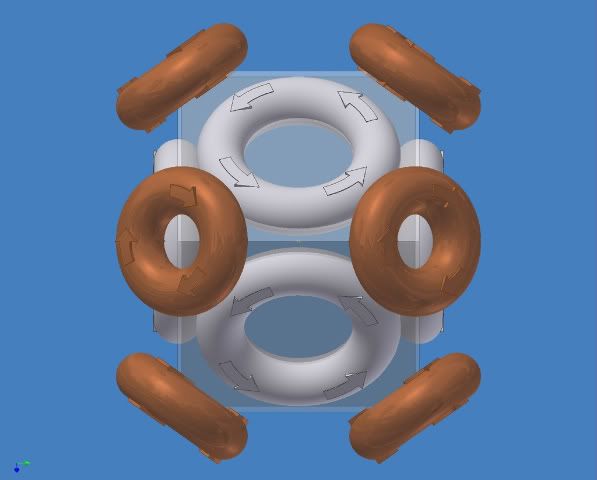As I see it the escape mode for the 2 coil cusp device is:
An electron (or ion) moving along the axis moving toward the center orbits a certain number of flux lines.
Any orbits that contain the central flux line will contain lines that diverge.
As it approaches the center the flux lines encircled diverge and eventually exit on the equator all the way around.
Since the number of flux lines contained in its orbit is conserved its orbit takes it out of the device.
Is that right?
[aside: Has anyone tried a 2 coil cusp machine with recirculation? It just might work. I think this was mentioned in another thread too.]
If we look at a Polywell the same way, where does the electron go?
The electron approaches the center along an axis circling a bundle of flux lines that that includes the central flux line and go to different places.
It spirals toward the center orbiting larger and larger radii then it (the guiding center) reverses direction to spiral away from the center again.
(After that reversal it contains more and more flux lines but half of the new ones go the other way also, so they cancel out.)
The encircled flux lines split up and go out of the device through 4 different corner cusps and the 4 connecting line cusps.
So this orbit takes it around the coil circling the major axis passing through all 4 corner cusps and all 4 line cusps following a square-ish path before it becomes more circular again outside the magrid.
Does the non-circularity of the loss path help? Or does it just wiggle its way around through them all?
I think it wiggles around them all and takes a square-ish path as it passes out between the coils following the line cusps.
[I think this is not a problem for the octahedral designs because there will always be a coil in the way.]
[There will probably be a coil support in the way in the cube version.]
My proposal:
Now add 8 coils just outside of the corners lined up in the shadows of the 6 primary coils.
Like this:


Most of the flux lines through the corner cusp will be gathered up by the outer coil and go through the outer coil.
This includes gathering up all of the central lines which form the tricuspid corner cusp and forces them to go through a point cusp.
Now no electron can escape without passing through a point type cusp.
(There will be a low field region between the outer coil and the virtual coils of the inner coils at that corner.
It is like between the turns of a solenoid. I don’t think it will be a problem but it will need to be analyzed.)
Now follow the electron trajectory of any electron whose orbit contains the central flux line.
It starts by spiraling inward but at some point it turns around and starts spiraling outward and passes through the magrid following a squarish orbit.
But now look what happens: four bundles of flux lines diverge to each go through a separate outer coil.
Now for the electron to continue follow this flux tube it must go out of and then back in through each of the 4 outer coils in turn.
The orbit becomes convoluted. But no matter how convoluted it becomes it will always be tied to the outer rings so it cannot get away. (except by collision etc.)
I consider this to be a work-around if the cusps don’t close enough when in wiffleball mode.


